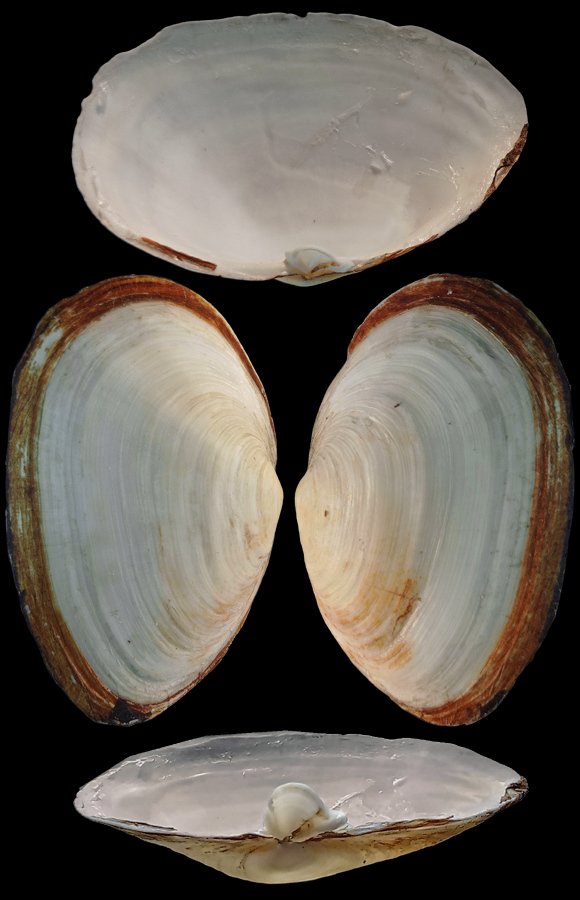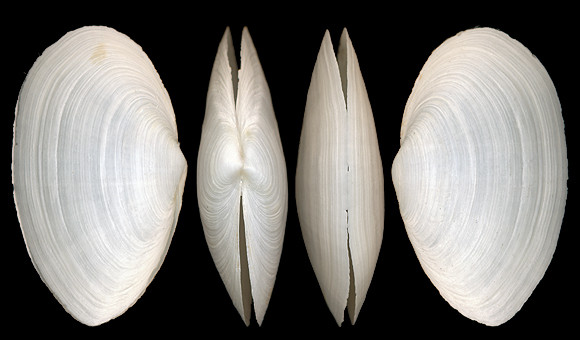
Arctic to N. Japan, to California, to N. Carolina. Adriatic, Black Sea. Originates in NE. America. Lives in colonies, deeply burrowed in sand or mud, from lower intertidal down to 75m deep (DORIS). Specimens from Mediterranean are rarer, thinner and smaller than their northern relatives.
2-3m deep, in sand and algae, Koblevo, Mykolaivs’ka oblast, NW. Black Sea. 35mm.
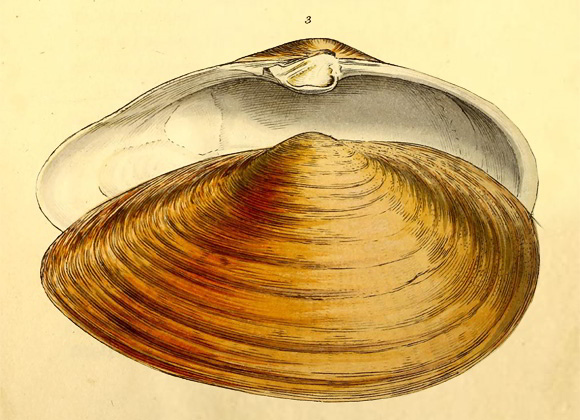
General conchology, London 1815, via BHL.
« The M. arenaria is a strong oval shell, gaping at both ends. The outside, when recent, is covered with a yellowish, or reddish brown coat, frequently marked with dark patches. It is concentrically striated, and has faint indications of longitudinal striae, from hinge to margin ; but these are not visible in all shells. The tooth is thick and spoon-shaped, with a small lateral one on the anterior side. The inside white ; the narrow end turns outwards, and has a few hairs attached to the epidermis externally. The valves are connected together by a strong cartilage, which fills the cavity of the tooth. Inhabits the European seas, and is found on sandy shores, buried to the depth of several inches, with the narrow end upwards. The animal […] has a long double tube, which it can extend, or contract, at pleasure. Their situation in the sand is known by a small hole on the surface… »
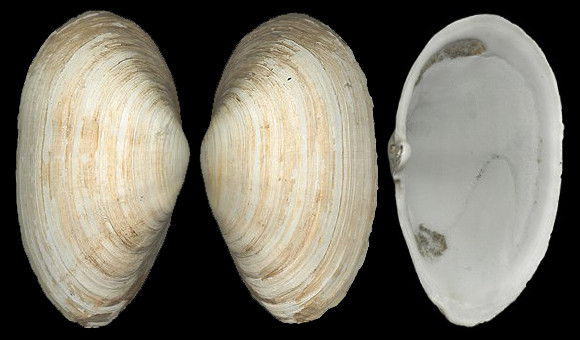
A specimen from northern Atlantic.
Shallow water in mud, Gufunes, Reykjavic, Iceland. 83mm.
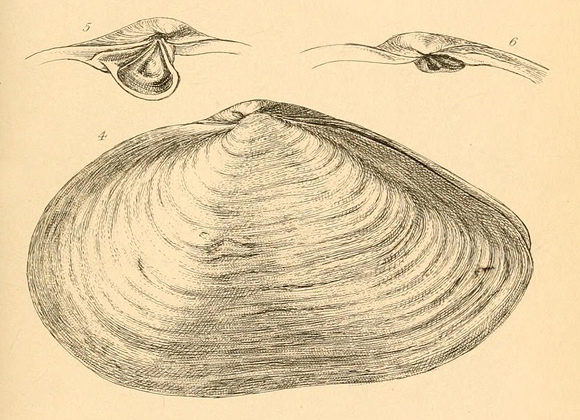
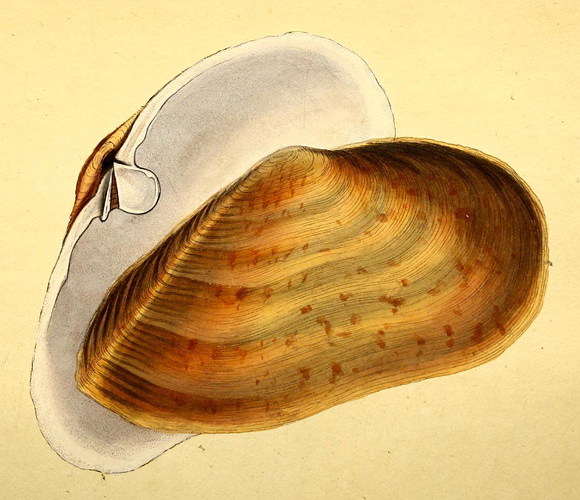
« This species is similar in its external appearance to the Mactra lutraria; yet it may be immediately distinguished from that shell by the singular structure of the hinge. The large, erect, plate-like tooth common to the Mya genus, is particularly characteristic in this species. »
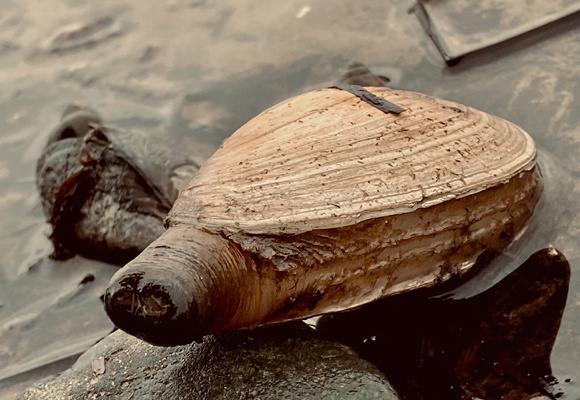
– (CC BY-NC) –
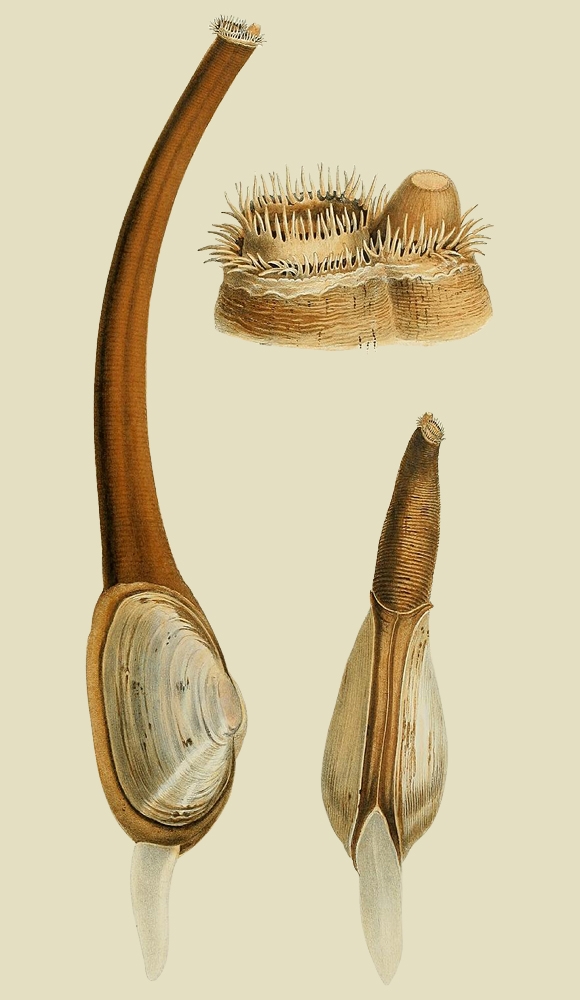
« The tubes are fused in their entire length; they can expand up to four times the shell length. Usually when expanded they are slightly curved, but they can also curve in a horseshoe shape. When contracted, they are very thick, short and coarse. […] Around the apertures of the siphons are two rows of cirri, the end of which has a tuft of fine hair. There is a thin-skinned, conical terminal piece on the exhalant siphon. » – op. cit. p.118.
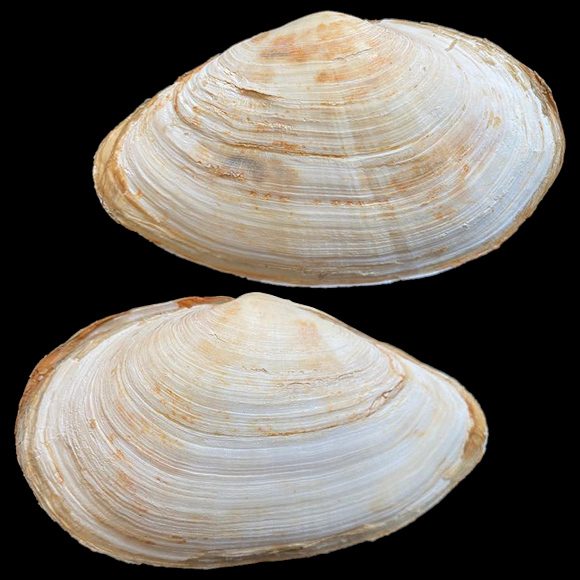
– (CC BY-NC-SA) –
